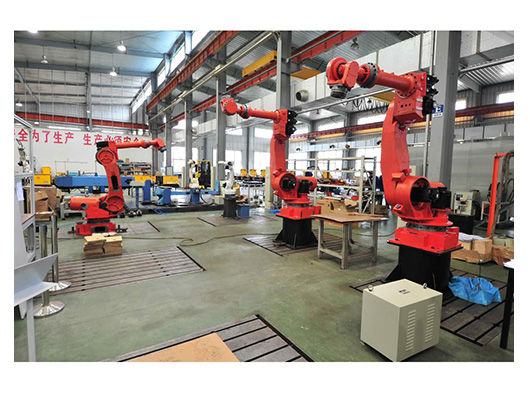PRODUCT CATEGORIES
CONTACT US
DANBACH ROBOT JIANGXI.INC. Phone:+86-18602162995Tel:+86-0791-88133135
Fax:+86-0791-88221576
E-mail:info@dbhrobot.com
Address:No.811,Chuangxin 3rd road,High-tech district,Nanchang city,Jiangxi province,China
What factors determine the flexibility of industrial robots?
DANBACH ROBOT
With the rapid development of the robot industry, industrial robots have been widely used in all walks of life, from material handling to machine maintenance, from welding to cutting, from assembly to spraying, we found that these industrial robots of different shapes, functional properties vary , Then what determines the flexibility and scope of industrial robots, the problem is more complex, but there is a key factor to a large extent determines the flexibility of the robot and range of activities, that is, industrial robot degrees of freedom, usually Also called the number of axes.
What is the freedom of industrial robots?
Usually as the robot's technical indicators, reflecting the mobility of the robot movement, the axis can be used to move, swing or rotate the number of actions to represent. The number of joints that the robot can move independently is called the degree of freedom of motion of the robot mechanism. The abbreviation is Degree of Freedom, which is denoted by the abbreviation of DOF. At present, the control method of industrial robots is to regard each joint on the robot arm as a single servo mechanism, that is, each axis corresponds to a server, and each server is controlled by the bus and controlled and coordinated by the controller.

The Application of Robots with Different Degrees of Freedom in Industry
The number of axes of the robot determines its degree of freedom. But the more freedom, the more complex the structure, the higher the overall requirements of the robot, which is the robot (Figure 1), the robot is not the same as the robot, it is not the more freedom the better? The more freedom the more close to the manpower of the action, the versatility of the better; Design of a contradiction. As the number of axes increases, the flexibility of the robot also increases. However, in today's industrial applications, the most widely used is the three-axis, four-axis, five-axis arms and six-axis industrial robots, the choice of the number of axes usually depends on the specific application. This is because, in some applications, does not require high flexibility, while the three-axis and four-axis robot is more cost-effective, and three-axis and four-axis robot speed is also a great advantage. For simple applications such as picking and placing parts between conveyor belts, a four-axis robot would suffice. A six-axis or seven-axis robot is the best choice if the robot needs to work in a tight space, and the robot arm needs twist reversal.
Nowadays, six-axis robots are widely used in industry. An industrial robot with six joints is very similar to a human arm. It has a shoulder, elbow and wrist, and its "shoulders" are usually mounted on a fixed base structure. The role of the human arm is to move the hand to a different position, and the role of six-axis robot is moving the end of the actuator, the end of the robot for the installation of specific scenarios of the various actuators, such as claws, torch, drill and Painting, etc., to complete the different tasks.
Recently, the robot manufacturers have released the latest man-machine collaboration robot, almost all of them using seven axes of the degree of freedom of industrial robots. World-renowned robot manufacturers have made efforts to launch seven-axis robot new products to seize the high-end new market, but the real product of the seven-axis industrial robots and traditional four-axis, six-axis industrial robots, from the product range, Than the current gap is very obvious.
Development Trend of Redundant Degree of Freedom
The six degree of freedom is the minimum degree of freedom with the ability to perform spatial positioning. More than six axes are called robots with redundant degrees of freedom. Robot kinematics research aims to solve the robot manipulator at the end of the actuator to reach a certain position in space, the movement of each joint or rotary movement, is the cornerstone of robotics and the key. With the rapid development of human civilization, in many industrial, high altitude, deep sea, nuclear waste and hazardous work environment, the work needs to be done by robots, robot movement control reliability, maneuverability, intelligence put forward higher Claim. In the future, with its increasing precision, redundant degrees of freedom robot to avoid obstacles, overcome the singularity, flexibility and fault tolerance has more advantages, the face of complex work environment and changing operational needs, redundant freedom Degree of industrial robots will have more useless. I believe in the near future, it will replace the manual for more sophisticated operations.
Previous:Unmanned robotic handling storage logistics industry to prom
next:Digital Factory, smart and intelligent manufacturing plant

